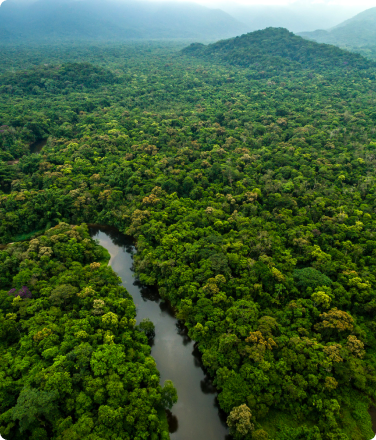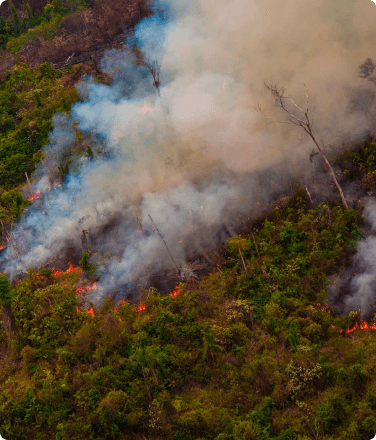In San Juan de Miraflores, from left to right: Romer Coquinche Shihuaongo, apu Arsenio Jota Grefa, and forest patroller Dosmil Grefa Alvarado.
IMAGE CREDIT: Pamela Huerta/Indigenous People’s Organization of the Eastern Amazon (ORPIO)
- For the Kichwa villages employing a satellite-and-smartphone-based forest protection program, deforestation rates have plummeted to near-zero.
- In the near future, Rainforest Foundation US and partners hope to expand the program to nearby communities, creating a veritable wall of forest protection along the Napo River, effectively sealing off from loggers an area of rainforest larger than Connecticut.
- This would in turn protect the area’s wild cats, who—as apex predators—are key to ensuring the natural balance of the ecosystem, and whose disappearance would have catastrophic effects on the area.
Protecting San Juan de Miraflores’s nearly 50 square miles (12,764 hectares) of rainforest can be uncomfortable, says Dosmil Grefa Alvarado, one of the village’s three forest patrollers (also known within the space as “community monitors”).
Setting out across the river with the rising sun, Grefa says he walks all day through sweltering heat, in thick foliage inhabited by “giant, biting ants.” He does this as part of his work with his villages, one of many employing Rainforest Alert—Rainforest Foundation US’s (RFUS) flagship forest protection program. Because the territory is so vast, sometimes his “shift” will last for multiple days, just so he can fully surveil and document any illegal destruction he comes across. But despite his discomfort, the results he gets are incredible.
Deforestation rates in the Upper Napo of Peru are astonishingly low. In San Juan de Miraflores, in the first six months of the program, deforestation was reduced to zero. Neighboring communities engaged in Rainforest Alert show similar numbers: In Monterrico, deforestation was reduced to zero. And it was the same story in Torres Causana, Pinduyacu, and Camunguy. Collectively, the six participating Kichwa villages saw zero deforestation in their first six months in the program.
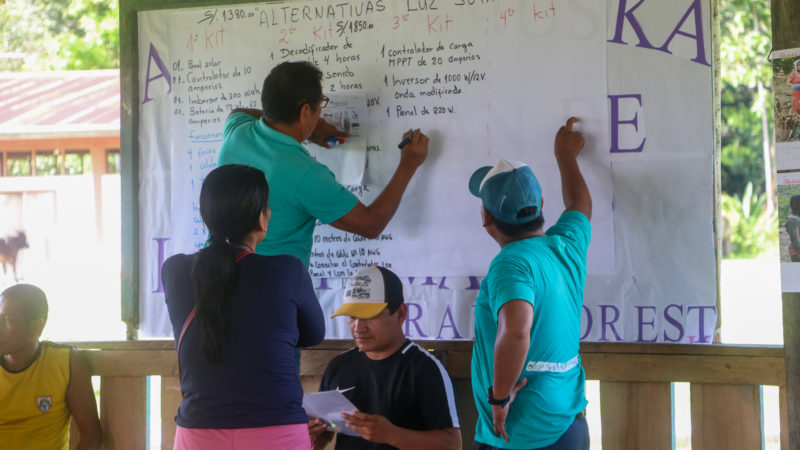
But these numbers can’t be taken for granted. Chinese markets have created booming demand for balsa wood (for wind turbines, ironically), leading to illegal deforestation of Kichwa communities in Amazonian Ecuador. That’s also threatening Peru’s forests.
Rainforest Alert will help stymie these loggers. What’s more, living conditions are improving in these villages as a direct consequence of their successful forest defense. In return for their participation in the Rainforest Alert program, Rainforest Foundation US has incentivized villages with payment in the form of community-wide betterment programs as part of a direct finance pilot program. The villages vote on the improvement they wish to invest in—an exercise that will enable them towards greater self-governance. At San Juan de Miraflores, community members voted to install solar-powered generators, giving them electric light.
In May, community members celebrated a successful six months of forest defense, gathering with RFUS staff at a town hall meeting to discuss next steps for the installation of the solar power generators they will purchase with the funding they’ve received.
“This system is incredible,” says Romer Coquinche Shihuango, 41 years old. “We have threats coming in from outsiders. They want to destroy our forests.”
“These forests are the green lungs of the world. They’re cleaning the air of contaminants,” says Florindo Coquinche, the village’s 33-year-old school teacher. “We have to defend them well—for ourselves and the children to come. These plants have souls. Cut them and they bleed.”
Being able to equip the community with solar power is a cherry on top. Coquinche explains, “We need light at night. The nights were so dark in my childhood. A single light can change the entire atmosphere.”
Or as Grefa put it, “Without light, we’re no different than our chickens. The sun goes down and then there’s nothing we can do.”
Why It Matters When Rainforest Communities Work Together
San Juan de Miraflores isn’t the only community in the Upper Napo area of the Peruvian Amazon participating in the program. Rather, there are six neighboring territories that are all using RFUS’s Rainforest Alert program to defend against illegal deforestation. Together, they’re protecting about 331 square miles (85,832 hectares) of rainforest—an area roughly equivalent to the Turks and Caicos islands.
But the protection they offer extends beyond their own territories. That’s because these Kichwa communities are all sitting on the banks of the Napo River. There are no roads in this part of the Amazon, which means that the Napo River isn’t only a water source, but also the only veritable “road.” As such, any extractive industrialists or narcotraffickers who would want to deforest any part of this territory would need to start by creating a penetration route into the forest from the riverbank.
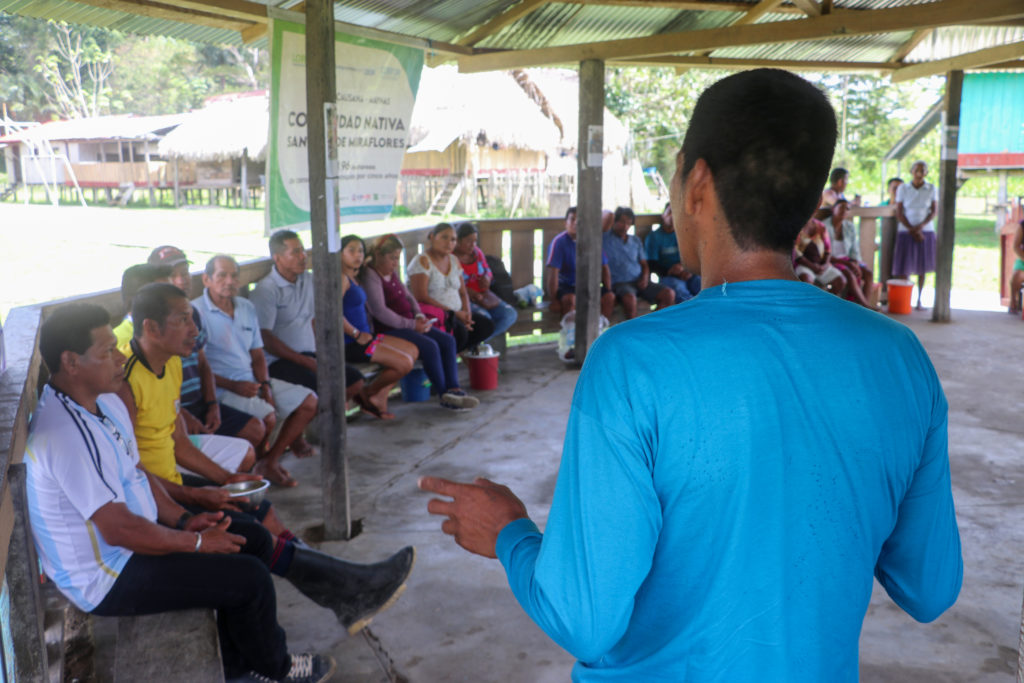
When all neighboring communities are participating in Rainforest Alert, they will collectively cordon off not only their own territory, but also the vast stretches of rainforest that sit inland behind them. Right now, there are still some gaps in the riverfront that are not under the purview of Rainforest Alert. But as the program scales up, that change will come.
“The infrastructure for expanding the program in the area is already in place,” explains Wendy Pineda, project coordinator for Rainforest Foundation US’s Peru program. “It’s just a matter of investing the resources.”
As of right now, there are 18 villages on the Napo River participating in the program. Together, they’re defending over 700 square miles (182,900 hectares) of rainforest territory. But ideally RFUS hopes to add 30 more communities to the program in the near future, thereby creating a wall of protection against deforestation down an unbroken stretch of river. Taken together, these 48 rainforest territories would cover about 2,350 square miles (609,900 hectares). And by creating a sealed barrier, an additional 2,550 square miles (660,100 hectares) of forest would be de facto protected from loggers, because loggers would have no way to get to it. Protecting these 4,900+ square miles (1.27 million hectares) of territory—an area larger than Connecticut—would mean ensuring that more than 2.5 million metric tons of carbon is absorbed from the atmosphere each year: effectively neutralizing the climate damage being done by 550,000 gasoline-powered cars in that same time frame.
Where the Biggest Cats in the Amazon Are
Of course, saving large unbroken tracts of rainforest is about more than the sum of its parts. Because there’s so much space to roam, the Upper Napo of Peru is one of the few places in the Americas where large wild cats still live in abundance. According to one study, there are over 22,000 jaguars in Peru—more than double the total in all of Central America. That’s led to some curious encounters for the Kichwa people deploying Rainforest Alert in their communities.
Fernando Jota, a 40-year-old community member from San Juan de Miraflores, refuses to live in the center of town, despite the convenience that being close to neighbors might offer.
“We had to move,” Jota explains. “I’m a pig farmer. The jaguars were always killing my pigs. And my chickens were getting eaten by oncillas,” a wild feline the size of a housecat.
In response to the loss of his animals, Jota built a small home on Paco Island, a small spit of land in the middle of the Napo River, where he lives with his older brother, Alicio. There, he’s raising dozens of chickens and “about 25 pigs” in peace.
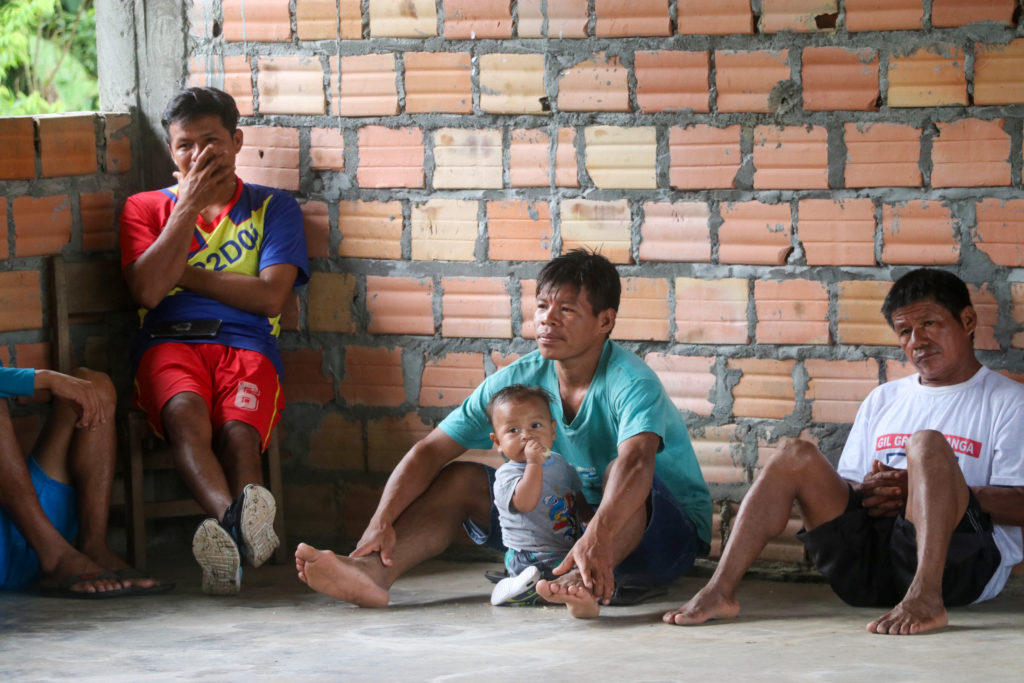
Others have made smaller adjustments. Victor Salazar, the former apu (i.e. village leader) in the neighboring community of Torres Causana, has razed the lawn in front of his home, replacing the thick brush with a constrained assortment of flowering bushes.
“This used to be all jungle, right up to my door,” Salazar says, pointing past his yard to a roughshod soccer pitch, where several hens wander about, pecking at the soil, each one followed by a gaggle of chicks. “Then one evening a jaguar came within a few feet of my porch. I decided, ‘Screw this, I’m making myself a lawn.’ The jaguars might still come, but at least this way I’ll see them coming.”
While entertaining as anecdotes, Salazar and Jota’s close encounters represent a fundamental conflict in big cat country—the uneasy relationship between humans and the region’s apex predators. But deforestation can only serve to exacerbate that problem, as loss of habitat (and the fauna that these big cats depend on) would increasingly drive them towards human population centers in search of food. Through programs like Rainforest Alert, these forests can stay standing, and keep jaguar populations healthy—and healthily away from people.
The alternative—reduced forest causing the jaguar to disappear from the region—would result in what scientists refer to as a “trophic cascade.” With the apex predator eliminated from the ecosystem, the food web would irreversibly tilt, resulting in the killing off of still other flora and fauna, catastrophic not only for the biodiversity of these regions, but far beyond.


